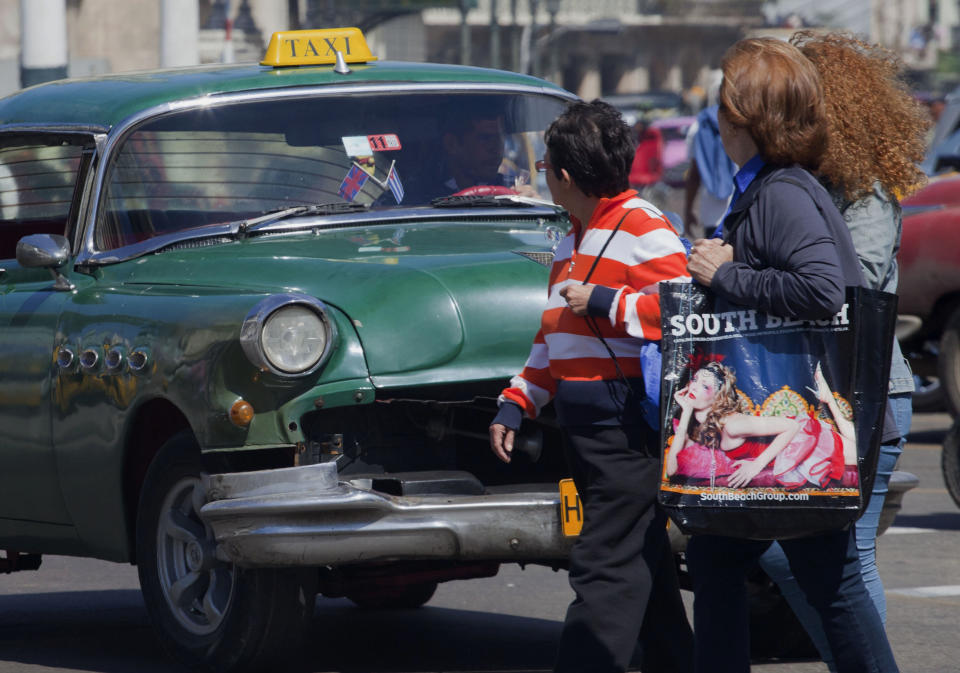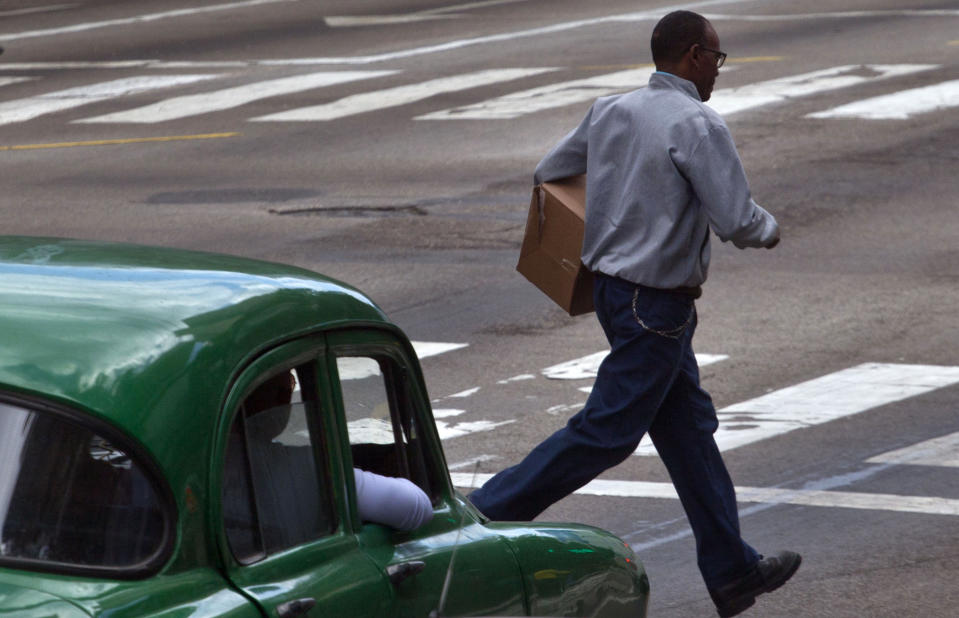Cuba looks to curb deadly scourge of jaywalking
HAVANA (AP) — Teenagers dash across a six-lane thoroughfare and launch themselves into the balmy waters of the Straits of Florida.
A couple skips the sidewalk and strolls down an unlit street as bulky 1950s cars with bald tires and worn brakes zip past inches away.
"Here there is no custom of using the crosswalk," said Maria Rubio, a 55-year-old Havana resident who had just sauntered across the six lanes of bustling 23rd Street, mere steps from a zebra-striped crossing. "We simply cross wherever we are."
Jaywalking is endemic in Havana, where islanders seem to treat the streets like a real-life version of the video game Frogger, weaving in and out of traffic while risking life and limb to reach the other side. Locals call it "toreando autos" — "bullfighting with cars."
Now authorities are trying to do something about the lack of caution, which they say contributes to hundreds of pedestrians being struck each year.
A recent full-page spread in the state newspaper Juventud Rebelde, titled "Lethal imprudence," showed photos of Cubans darting in front of oncoming cars. It also gave rare data on traffic accidents, saying more than 1,300 pedestrians are mowed down each year in this nation of 11 million people. About one in seven of those accidents is fatal.
"A catalog of suffering that can be overcome only through love of life and sufficient caution," the brief accompanying text said.
Official newspapers like Juventud Rebelde are commonly used to push campaigns against various forms of "social indiscipline," such as wasteful overuse of air conditioners and tardiness by workers in getting to their government jobs.
Outsiders who visit Havana often remark how little traffic there is for a city of its size, about 2.1 million people. But the streets have recovered much of their bustle in the years since the Soviet Union's collapse in the 1990s caused severe fuel shortages that idled all but a few vehicles.
New cars are flowing in from Asia and Europe even as older models stay in circulation long past the time when they would be scrapped in other countries. There are no statistics, but traffic is undoubtedly getting heavier each year.
The increased danger hasn't made any dent in lax attitudes about safety on the streets, as Associated Press journalists found while touring Havana's chaotic streets.
Here a man lay knocked to the asphalt by a '50s Detroit classic, quickly attended to by the driver and passersby amid cries of "He's alive!" and "Don't move him!"
At another spot, two women stood in the middle of the road trying to thumb a ride to avoid using Havana's irregular, crowded buses. Elsewhere, a woman pushing a stroller hurried across an avenue to beat approaching traffic.
Elementary school children streaming across a busy street in the Vedado neighborhood as classes let out said there's never a crossing guard to keep them safe.
Back on 23rd, a traffic cop looked on with a bored expression as a dozen pedestrians crossed against the light.
And there was no interference with the teenagers who were racing across the Malecon boulevard to build up speed for leaping into the sea.
"The police don't say anything to us," said 14-year-old Maikel Rojo. "They only tell us that if tourists are around we should be careful not to get them wet and not ask them for money. But they don't say a thing about our running."
The jaywalking problem is exacerbated by Havana's sorely deficient infrastructure. Along a 5-mile (8-kilometer) stretch of the Malecon and 5th Avenue, a major artery with a speed limit of 50 mph (80 kph), there's not a single pedestrian crossing and just five stoplights.
Crumbling and sometimes nonexistent sidewalks have locals so accustomed to walking in the road that many stroll in the only slightly better maintained streets even when a good sidewalk exists.
Motorists complain that driving the Malecon is particularly harrowing on weekend nights when thousands gather to socialize and get tipsy, spilling out onto the slippery, often unlit boulevard.
Given the relative lack of streetlamps, many drivers leave their high beams on to illuminate the potholes and jaywalkers — and in doing so, blind other motorists from the same hazards.
"When I'm driving, especially at night, it frightens me to think someone could suddenly appear, and if I hit him I go to jail," said Alejandro Llanes, who makes his living as a driver but had just strolled casually across 23rd Street in the middle of the block. "But look at the lack of culture we have. When I'm a pedestrian, I do the same thing."
Just then two city buses halted in the middle of the road, far from any apparent bus stop, and began disgorging passengers into traffic as cars whizzed by.
"Look at that!" Llanes exclaimed. "If something happens there, whose fault is it?"
Cuban law prescribes jail time for motorists who kill pedestrians, even if they aren't speeding and the victim crosses improperly.
Victor Guzman, a 55-year-old Havana resident, said that if authorities are serious about discouraging jaywalking, they need to fix the streets and sidewalks, improve signage and paint more lanes and crosswalks.
But he and others expressed doubt that a scolding in state media will fare any better than past drives to alter bad habits.
"This has been a joke for 50 years," Guzman said. "There is not even a minimal awareness of traffic rules, and that's something you can't change in a few days."
___
Follow Peter Orsi on Twitter: www.twitter.com/Peter_Orsi





